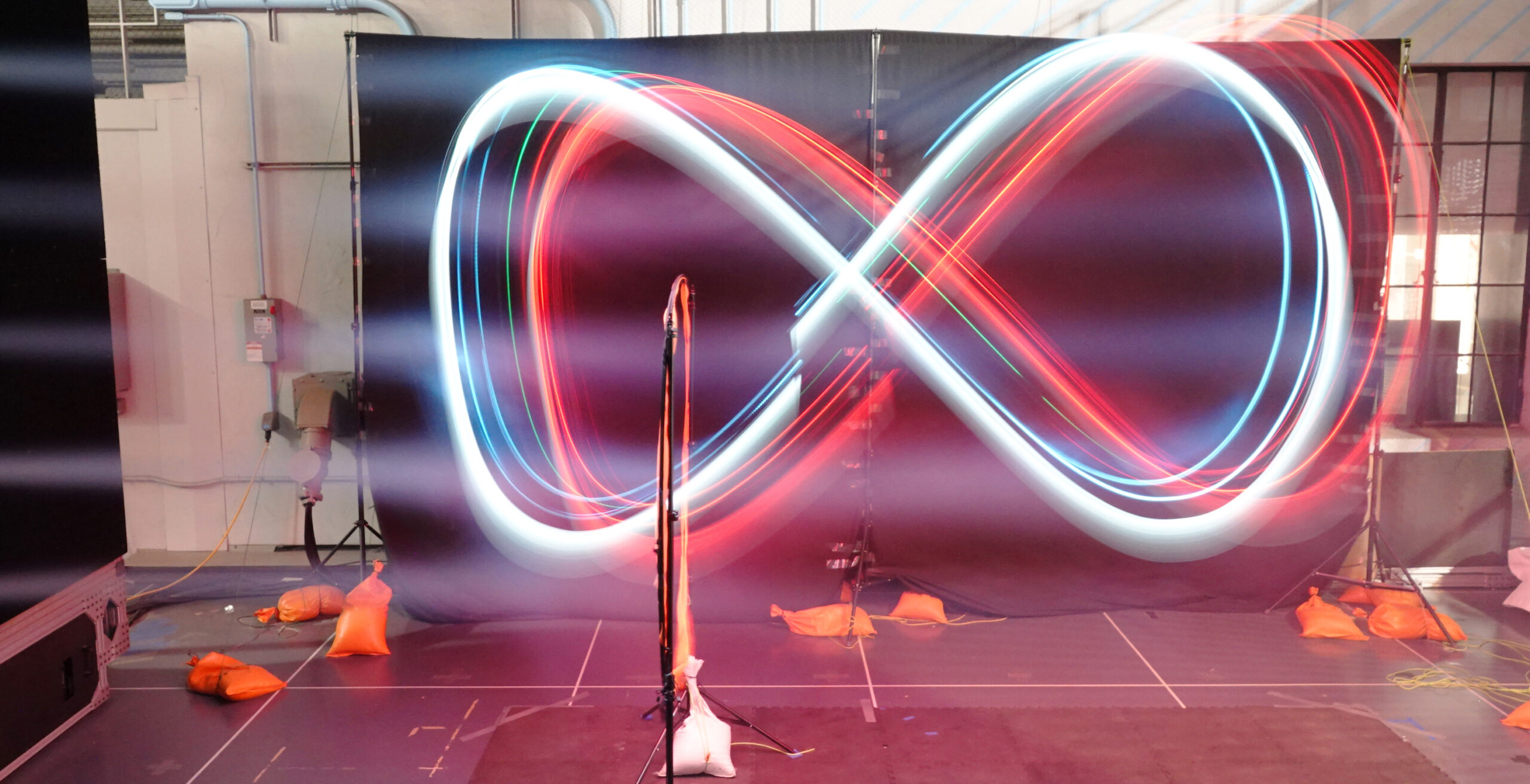

Dealing with wind is a part of flying through the air. Crosswinds can pose a challenge for pilots to overcome as they bring their airliners in for landings, or on a smaller level, a gust can push a drone around its small section of airspace.
To give drones better maneuverability when flying in the wind, a team of engineers from CalTech have developed a deep neural network—an artificial intelligence tool—to allow a drone to be agile in the presence of blowing air. In a video, the researchers show off a quadcopter drone that, thanks to this software, can pull off figure-eight maneuvers and fly through a small gate, all in the presence of 27-mph-wind in a wind tunnel.
The scientists first had to gather data to be able to train a neural network in order to make the flying machine pull off the stunts. It didn’t take much: just 12 minutes of flight time. “That’s very little data,” reflects Michael O’Connell, graduate student in the aerospace department at CalTech and one of the authors of a new study describing the work published Wednesday in the journal Science Robotics. This AI-driven work is called Neural-Fly, and it follows other similar work called Neural Lander and Neural-Swarm.
During training for this latest Neural-Fly experiment, the drone flew in a wind tunnel in the presence of six different wind speeds, with 13.4 mph being the fastest. “We basically teach the drone, ‘This is what it looks like when you’re hit by 5-mph wind, 10-mph wind,’” O’Connell says. “The drone is able to learn what wind looks like, and then when we go fly our figure-eight test trajectory, it uses that experience, and it says, ‘I’ve seen this before.’”
From that data, the team created the deep neural network that then allowed their flying machine to be skilled at carrying out maneuvers in the same wind tunnel, like zooming through a gate in a figure-eight pattern or cruising through two gates in ellipse shape. The speed the drone experienced in testing were faster than what it had encountered in training: about 27 miles per hour. That’s the maximum wind speed this wind tunnel could produce, notes Guanya Shi, another author on the paper and grad student at CalTech. In addition to needing just a small amount of data, the software runs on just a Raspberry Pi, an inexpensive piece of computing equipment.
Soon-Jo Chung, a professor of aerospace and control and dynamics systems at CalTech, and coauthor on the same paper, says that the rate of errors that they see with the new system is between 2.5 – 4 times better when comparing it to the existing “state of the art” tech for precise drone flying. The deep neural network flying the drone also has “adaptive control,” Chung notes, calling it a “breakthrough method.” This means that the AI can respond adaptively to what happens in real time with the wind.
Chung sees applications for this machine-learning system when it comes to a future in which our skies could be filled with more drones. Companies like FedEx are looking into using large drones to help move packages from one spot to another, and Alphabet-owned Wing is delivering consumer goods via small drones in Texas. Meanwhile, other firms are working on electric flying machines that can carry humans—these are air taxis that can take off and land vertically. The plans for those range from craft designed to fly themselves autonomously with a passenger on board, to those currently planned around human pilots.
Drones that need to have an “ultimate safety guarantee” could benefit from software like this, Chung says. “The ultimate example is obviously, the flying cars, because they have to carry human passengers.”
“We are hopefully making that future where we can have safe unmanned vehicles that can survive potentially any wind conditions—tornadoes, hurricanes, and heavy storms,” Chung adds. “I cannot say that we can achieve that immediately using our Neural-Fly, but we are making one great step forward toward that goal.”
After all, whether the drone is carrying packages or people, it needs to land safely on its pad, even if the wind is blowing in an unpredictable way. Without the promise of a safe landing, the mission might have to be scrubbed before it gets off the ground, or the flying machine rerouted to a different location if it’s already buzzing through the air.
Watch a short video on the tech, below:

